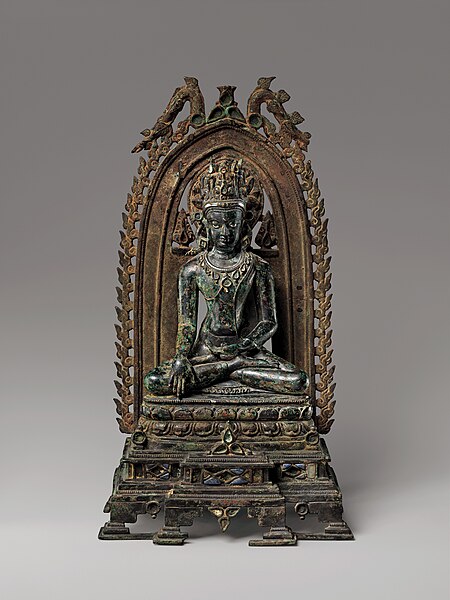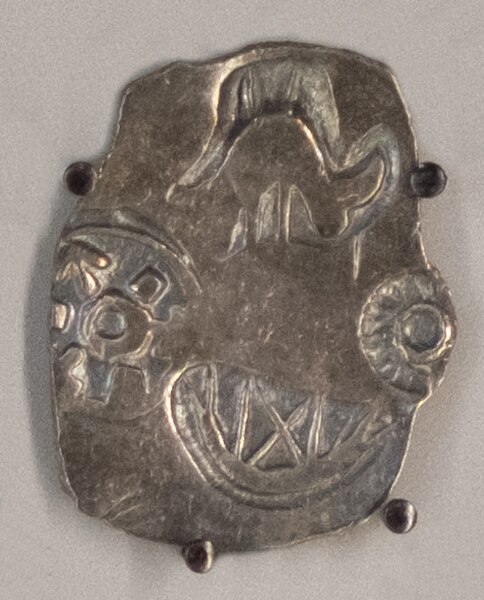The Pāla Empire was an imperial power during the post-classical period in the Indian subcontinent, which originated in the region of Bengal. It is named after its ruling dynasty, whose rulers bore names ending with the suffix Pāla. The empire was founded with the election of Gopāla as the emperor of Gauda in late eighth century CE. The Pala stronghold was located in Bengal and eastern Bihar, which included the major cities of Gauḍa, Vikramapura, Pāṭaliputra, Monghyr, Somapura, Ramavati (Varendra), Tāmralipta and Jagaddala.
Vishnu with His Consorts, Lakshmi and Sarasvati, 11–12th century, Bihar or Bengal, Pala period
Coin of the Pala Empire, Mahipala and later. Circa 988–1161 CE
Bronze crowned Buddha, Bihar, Pala Empire, 10th–11th century
Vishnu Flanked by His Personified Attributes, early 9th century CE, Pala period, Bihar, India
Bengal or endonym Bangla is a historical geographical, ethnolinguistic and cultural term referring to a region in the eastern part of the Indian subcontinent at the apex of the Bay of Bengal. The region of Bengal proper is divided between modern-day sovereign nation of Bangladesh and the Indian state of West Bengal.
Bengal in Asia
Punch-marked coin of the Vanga Kingdom, 400–300 BCE
Atisa of Bikrampur
Coin featuring a horseman issued by the Delhi Sultanate celebrating the Muslim conquest of Lakhnauti








